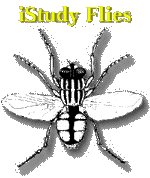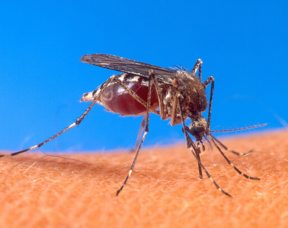
|
iStudy Flies - Tiger Mosquito, Yellow Jack, and the Panama Canal
TIGER MOSQUITO, YELLOW JACK, AND THE PANAMA
CANAL
Yellow Jack or yellow fever is spread by the yellow-fever mosquito (known also as the "Tiger" mosquito). Its distinctive stripes gave the yellow-fever mosquito its "Tiger" designation. The Panama Canal construction project was abandoned by the French after expending about $26 million and losing more than 22,000 lives to the yellow fever mosquito. [34] The United States began its effort to construct the Panama Canal on May 4, 1904, after signing a treaty with the newly formed nation of Panama and tendering payment of $10 million. In February 1905, Dr. William C. Gorgas of the U.S. Army Medical Corps began to apply sanitary measures to prevent the spread of yellow fever among the workers through the control of the Stegomyia mosquito vector, which is the yellow fever mosquito (now more accurately named Aedes aegypti). Gorgas' background with Dr. Walter Reed in Cuba during the Spanish-American War, armed him with the knowledge that the control and eradication of the Stegomyia mosquito would be the defeat of yellow fever, and to deprive the Anopheles mosquito of breeding places was the overthrow of malaria. [35] Depriving the Stegomyia mosquito of standing water, screening window and doors, fumigating house-by-house, and weekly oiling cisterns and cesspools resulted in the last case of yellow fever reported in Panama City on November 11, 1905 -- Gorgas having arrived in Panama in June of 1904. [36] According to Dr. Gorgas, defeating the yellow fever vector mosquito was like "making war on the family cat," but defeating the malaria carrier mosquito was "like fighting all the beasts of the jungle." [37] With the knowledge that the Anopheles mosquito must land before flying any appreciable distance, 200 yard wide areas were cleared around living quarters and work areas. Swamps were drained. Vegetation was cut. Standing water was sprayed with oil. Minnows were released to feed upon the Anopheles larvae. Spiders, ants, and lizards were bred and released to prey upon the malaria vector mosquito. A larvae-smothering oil of carbolic acid, resin, and caustic soda was applied around the edges of pools of water and streams. Deaths from malaria declined from 7.45 per 1,000 in 1906 to .30 per 1,000 in 1913. [38]
|
Member of Fohn.net
